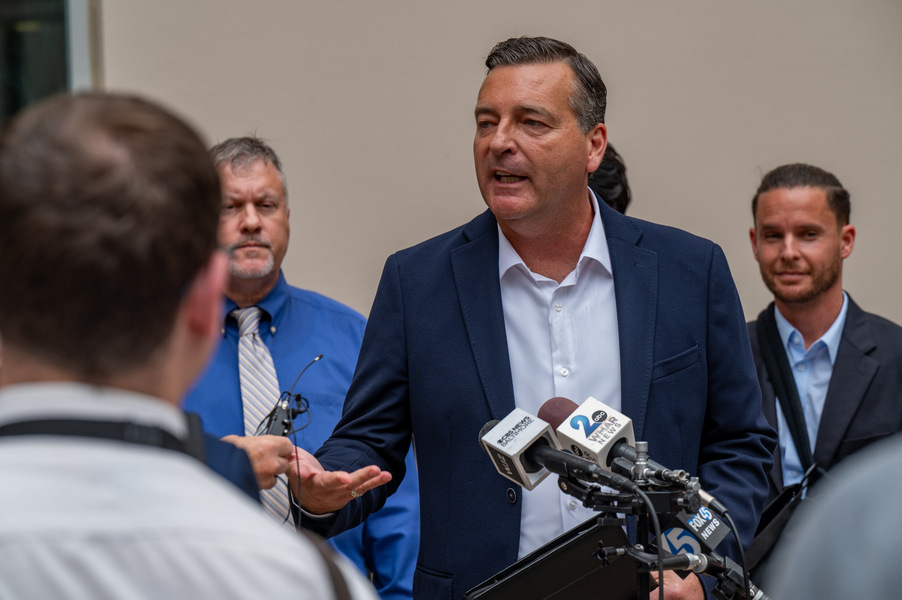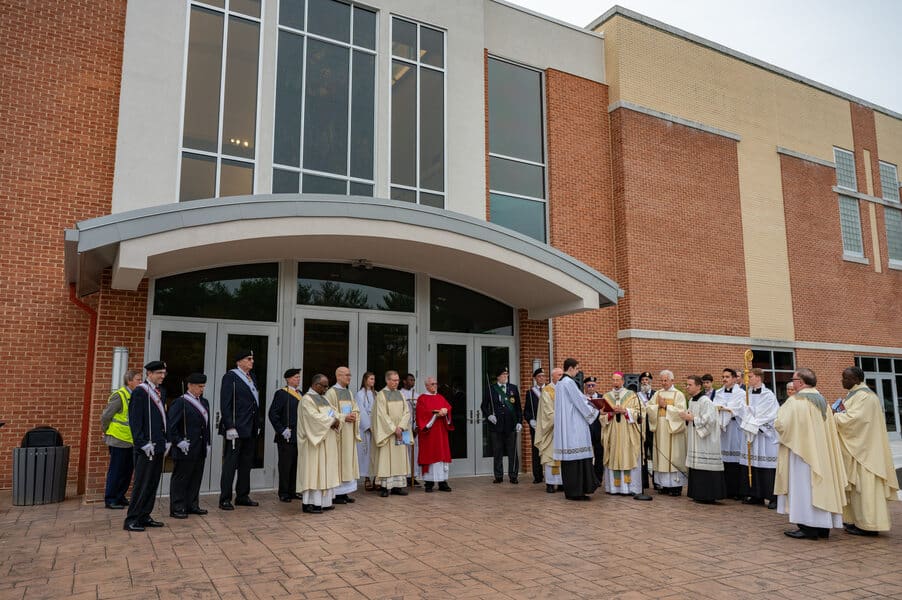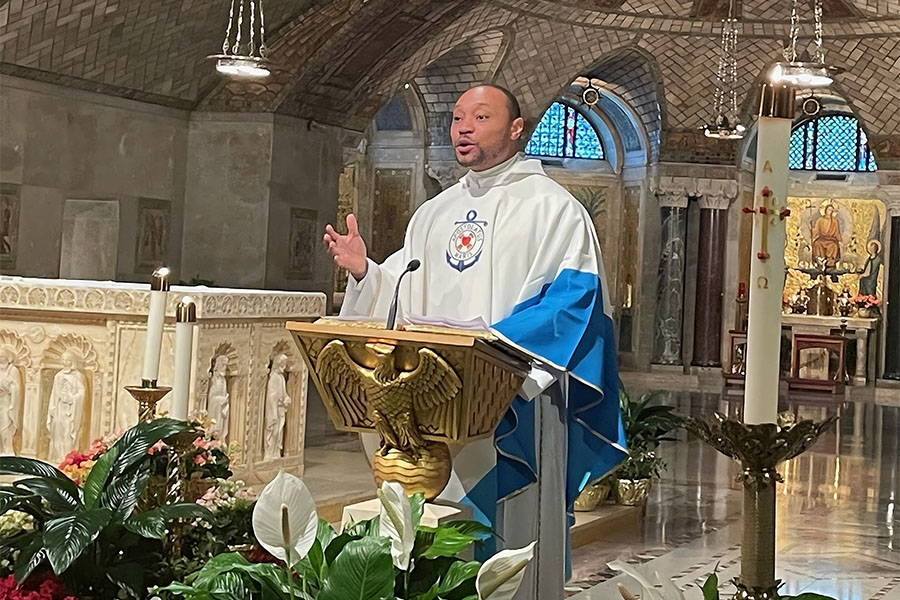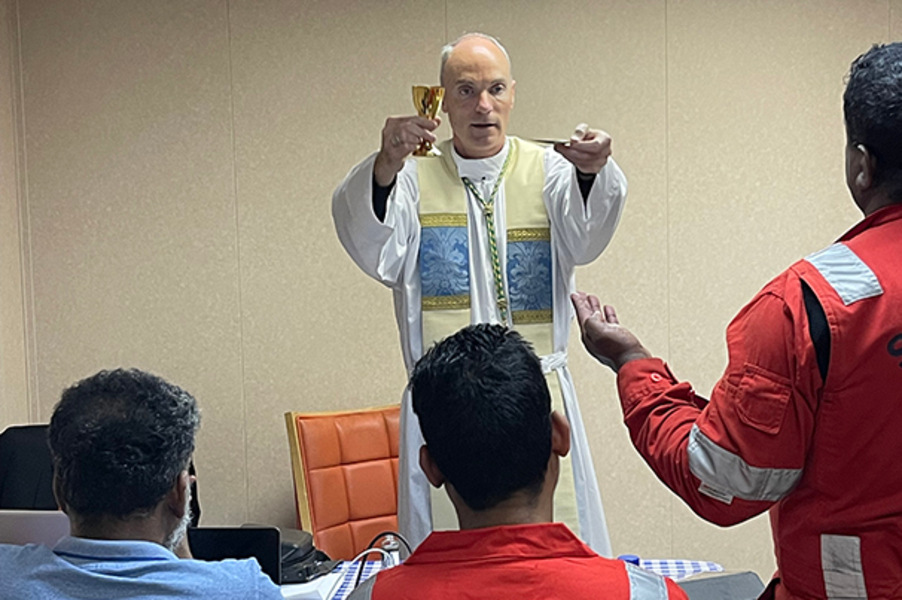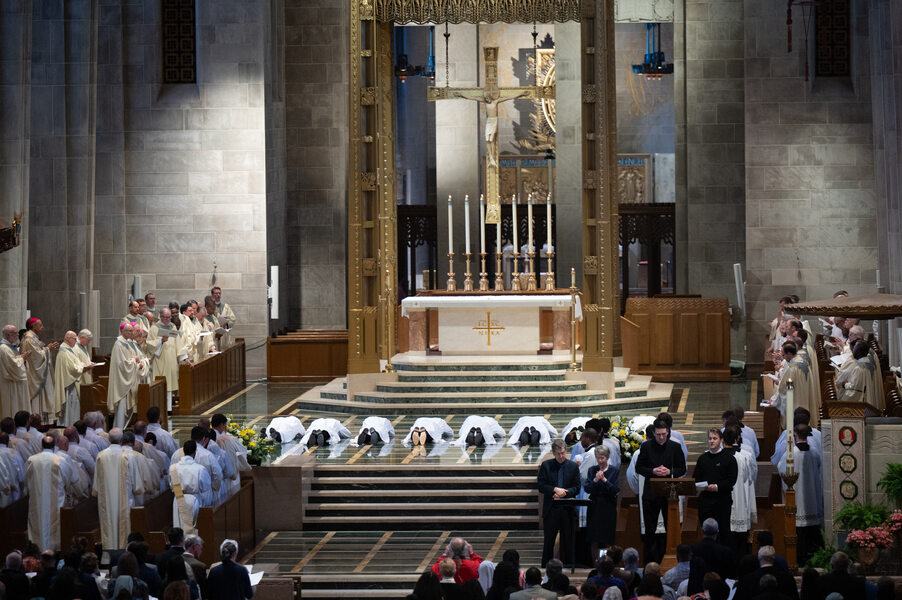As part of the Chapter 11 reorganization process, the Archdiocese of Baltimore has filed a complaint in U.S. bankruptcy court against insurance companies that held policies for the archdiocese, parishes, schools and other entities.
The practice is standard in such cases to let insurers know of the periods their policies covered and the types of damages that would be covered. It is a way of including insurance carriers in the bankruptcy case so that they can be a part of any mediation discussions.
Attorneys for some of the insurance companies have already been participating in some of the case hearings and teleconferences.
The complaint lists almost 200 separate parish or school entities, in addition to the archdiocese, that would be covered by policies dating from as far back as 1956 from as many as 23 insurance companies named in the complaint.
The complaint notes that the Child Victims Act, passed by the Maryland General Assembly in 2023 and which went into effect Oct. 1, 2023, “allows claimants to file and pursue previously time-barred claims alleging sexual abuse. Prior to the CVA, the statute of limitations prevented claimants from asserting such claims.”
Bankruptcy Court Judge Michelle M. Harner, who is overseeing the case, set May 31, 2024, as the deadline to file claims against the archdiocese, also known as the bar date.
Insurance companies will likely raise certain defenses or reserve their rights not to pay on some claims. Historically, in the more than 30 diocesan bankruptcies that have been resolved at this point, those issues are usually worked out in mediation.
The carriers provide funds into a compensation trust.
In the Archdiocese of St. Paul-Minneapolis bankruptcy case, which was resolved in 2018, Insurance companies contributed $170 million to the total $210 million plan for reorganization.
The Archdiocese of Baltimore, as well as parishes, schools and other affiliated entities – sometimes referred to in such cases as “the Catholic family” – contribute to a settlement trust, which would allow them to be discharged from suits for historical claims by way of a channeling injunction. In a similar way, when insurance carriers participate in the settlement process by buying back policies of contributing in other ways, they are protected by a supplemental insurer injunction.
“Basically, it’s taking all of the assets that are reasonably available for compensating survivors, transferring them into a trust that’s designed to compensate survivors, and then insulating everyone from those claims,” said Christian Kendzierski, executive director of communications for the archdiocese. “It takes the claims and puts them all in the same place.”
Negotiation on a settlement is expected to begin a couple of months after the bar date, once the number of claims is established. Once a settlement is agreed, a separate claims reviewer will develop a protocol to determine the amount of compensation for each victim-survivor.
In the experience of attorneys handling diocesan bankruptcy cases over the years, the protocol is predominantly developed by the Unsecured Creditors Committee, which in the Baltimore case is made up of seven victim-survivors who represent all the claimants in the case. The archdiocese and its experts “don’t want to be in the business of telling them how to compensate survivors,” Kendzierski said.
The archdiocese and the insurance carriers will be part of the mediations. “There will be funding from what we generally kind of internally referred to as ‘the Catholic family’ – meaning the archdiocese, parishes, schools and other insured entities – on the one hand and then the insurance carriers on the other hand,” Kendzierski said.
Insurance information was gathered by asking parishes, schools and other entities to go back through their records to find proof of coverage, and then put all that information into a database.
This ensures that every entity that is insured and was in the past insured is included, and that every carrier that either in its present iteration or its past iteration is named in the complaint.
In a case filed by the Archdiocese of Washington, a court in Montgomery County ruled April 1 that the Child Victims Act is unconstitutional, the first court to make that determination. The case will likely be appealed by plaintiffs in the matter.
According to Kendzierski, the case does not have a direct bearing on the Archdiocese of Baltimore’s reorganization, but it is one of the many elements that will inform and impact the archdiocese’s bankruptcy case and (how) overall compensation is determined.
In other jurisdictions where such laws have been found to be unconstitutional, state legislators often try to address those concerns with subsequent legislation.
Archbishop William E. Lori said when announcing the filing for reorganization that the archdiocese had two goals in the process: providing equitable settlements for those who have been harmed, while sustaining the archdiocese’s mission and ministries.
To date, 34 dioceses or archdioceses have declared bankruptcy to address claims, such as the Archdiocese of Baltimore has done. Of those, 19 have emerged from the process. The Diocese of Sacramento is the latest to have filed for reorganization, Bishop Jaime Soto announced April 1.
Read More Local News
Copyright © 2024 Catholic Review Media


